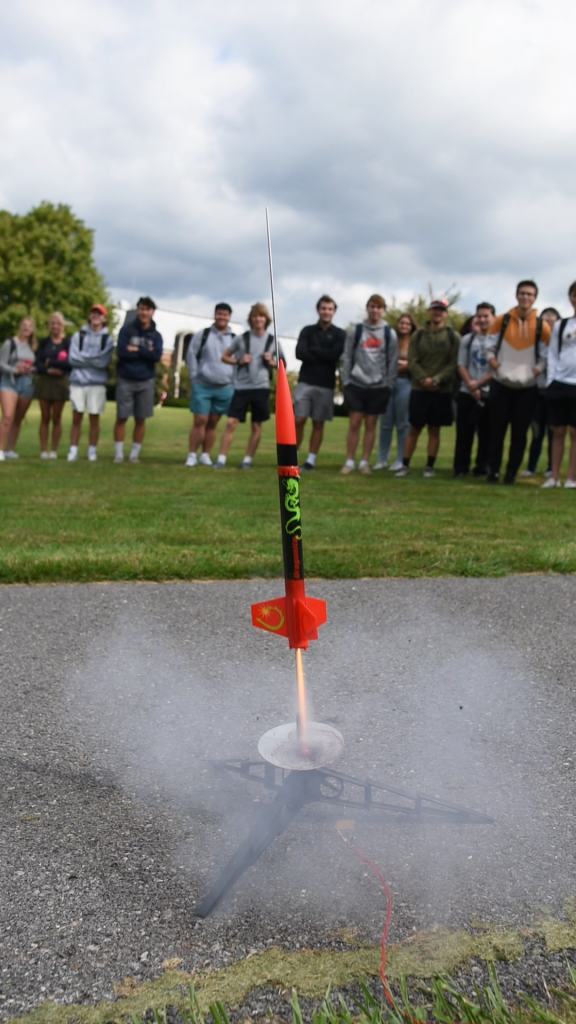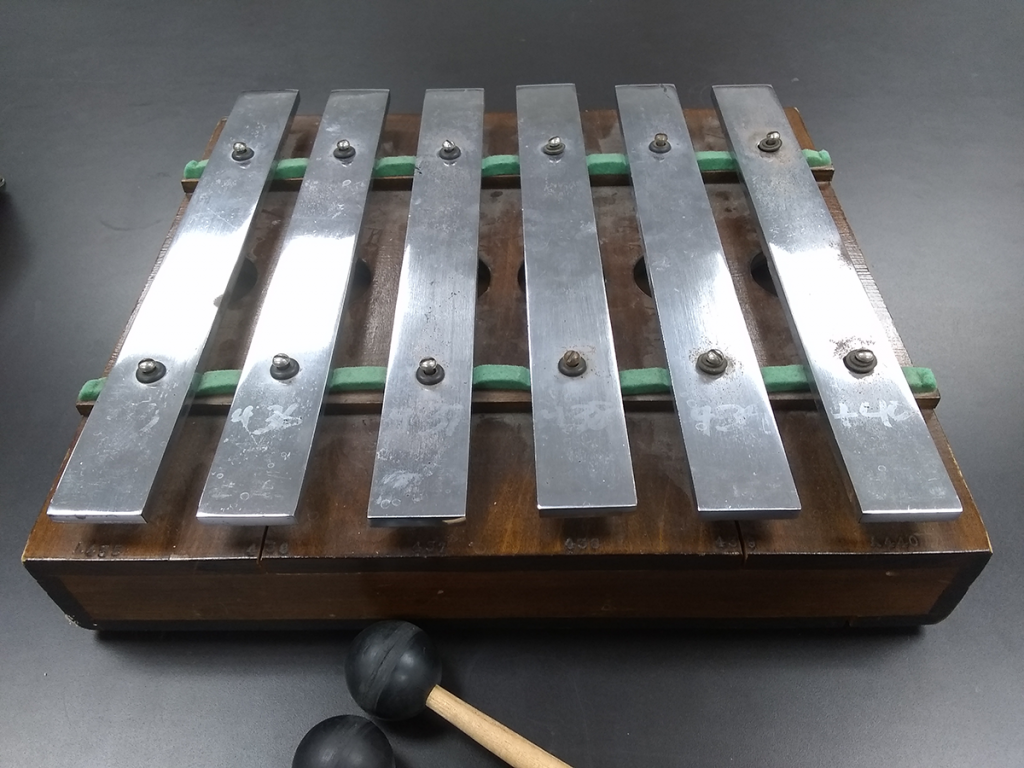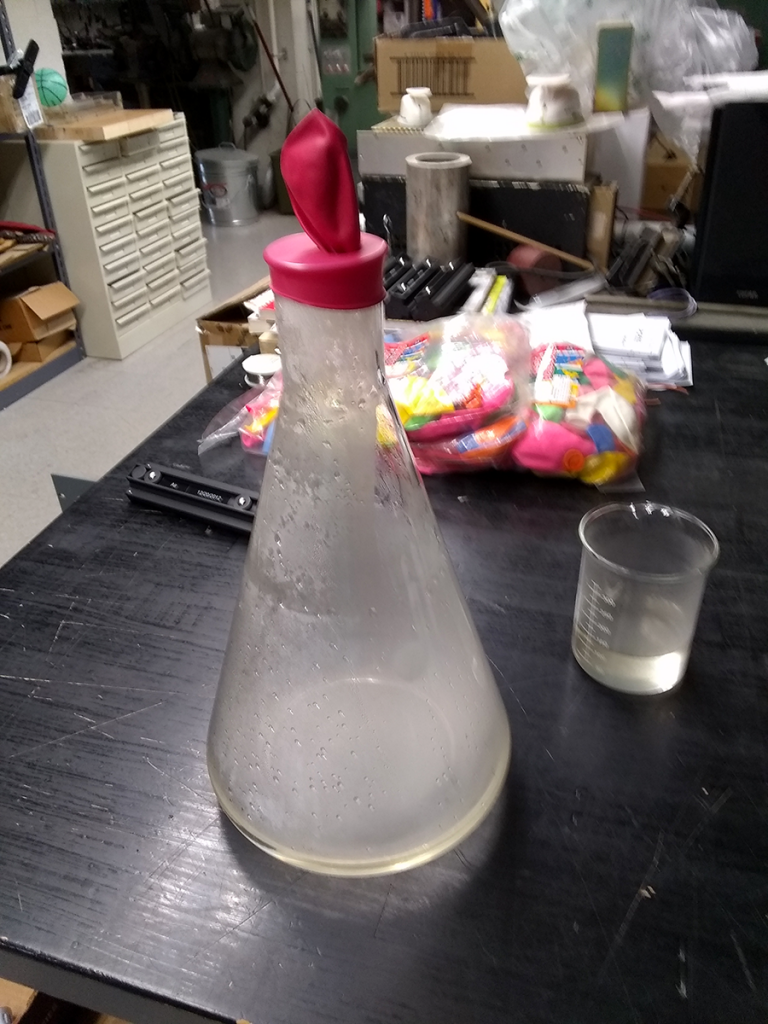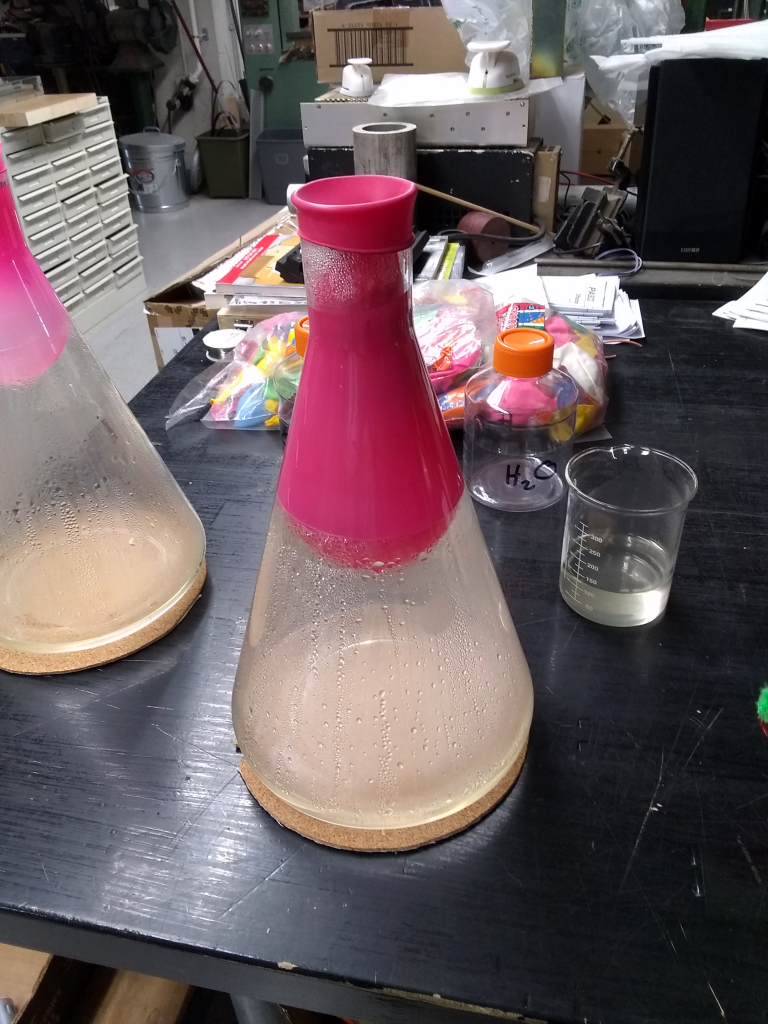
In case you were wondering:
Yes, the parachute deployed.
No, we did not recover the rocket.
Discoveries in the Physics & Astronomy shop | Science, curiosities, and surprises

In case you were wondering:
Yes, the parachute deployed.
No, we did not recover the rocket.

In acoustics, there’s a phenomenon known as beats, which is when two similar tones generate an interference pattern that sounds like a pulsing beat. It happens with waves of all kinds, waves being moving energy and all that, but sometimes it’s easier to really get the sensation when you hear it. Graphing out the sinusoids and showing the constructive and destructive interference helps explain it. Hearing that wubwubwubwubwub cements it.
We have what looks, at first glance, like a glockenspiel, with its metal bars all in a row. Tap one with the mallet, and it sounds almost the same as the one next to it. Almost. Tap two at once, and you get the beats.
At one end, it’s 440 Hz. Then 439, 438, 437, 436, and 435 Hz. Not only can you hear the beats, but you can very clearly hear the change in beat frequency as you combine tones in different combinations. It’s very cool.
Also quite unnerving after a while. woobwoobwoobwoobwoob

What can you do with a large Erlenmeyer flask, a kettle of boiling water, and a bag of balloons? Science, of course!
Get the flask hot with a pour of boiling water first, then pour out. Add a small amount of boiling water – as hot as can be – and quickly seal with a balloon. We’re looking for steam, and lots of it.
Then wait and see what happens!
